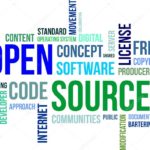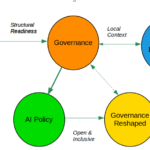Objective
The purpose of this concept note is to shed some light on the notion of Public Software (Software Publico, SP), based on the original model developed by the Brazilian Government (Software Público Brasileiro – SPB), and compare it with the broader concept of Free and Open Source Software (FOSS). The idea of SP has been picked up by UNDP’s International Public Software (IPS) regional programme which aims at expanding the concept and the use of SP in the Latin American and the Caribbean. The concept note will show that SP is essentially a new distribution form of FOSS that adds specific additional safeguards and mechanisms for the better management and availability of the applications to favor the use and exchange of FOSS in the public sector and society at large in general.
Background
The Brazilian Public Software model emerged from the almost insurmountable challenges that public national institutions faced while trying to share software applications they have developed. Back then, the mainframe environment was the primary platform for computing operations, which required technical cooperation agreements to be used for sharing software solutions. Such agreements, in addition to coping with the burden of complicated bureaucratic procedures, fell short of the established goals since the source code’s property remained in the original developers’ hands. Recipient institutions, in fact, became hostages of them. In addition, signed agreements could be revoked or canceled at any time, etc. The instability generated by this process inhibited, for a long time, the sharing of software solutions within all levels of government.
The implications of this failure were not surprising. A few of the key ones were the waste of resources due to duplication of efforts, failure to disseminate and replicate successful experiences, and the sedimentation of close cultures within public administration, preventing the flow of knowledge.
The emergence and growth of FOSS in the 1990s started to change the environment. The dissemination of the second version of the General Public License (GPL II) fostered a discussion on how public agencies could share the software solutions developed by the public sector. In 2004, the National Institute of Information Technology (ITI – an institution linked to the Office of the Presidency of Brazil) commissioned a study on compliance with Brazilian law of releasing all the software developed by the public sector as FOSS. One of the study’s key findings was that no legal obstacle prevented this from taking place in Brazil.
In 2005, Brazil’s Federal Government Brazil licensed its first FOSS application. The solution licensed in 2005 was an Automatic Configuration and Computer Information Collecting tool (CACIC), developed by DATAPEV (Brazilain Social Security Data Processing Bureau), that aims to meet the mapping needs of IT resources from the government. It received many enrollments for its development community, from public service and private enterprise users to service providers in several locations nationwide. It now has 21,461 members, some in Uruguay, Argentina and Portugal. This reaction led to the perception that the solution was “answering a pent-up demand of society”1, and not only of public administration. The Brazilian government then proposed a robust model for distributing FOSS software developed by public institutions, thus returning them to society.
FOSS and GPL Issues
Following FOSS standards, CACIC was issued under GPL, using a GPL II Portuguese made by Creative Commons. As with all other languages, the Free Software Foundation (FSF) did not legally recognize the translation. However, a license in Portuguese is a legal requirement in Brazil since it is a type of contract, and as such, it has to comply with specific national legislation. The refusal of the FSF to recognize translations of its original license (only available in English) and the search for options other than GPL II are issues that the IPS project will have to deal with as part of its activities.
It was then apparent that the problems that needed to be addressed went beyond the simple release of the code as FOSS and the four freedoms provided by GPL II. First, software distribution would have to be centralized and coordinated by a central body. This would avoid a dispersion of solutions or the discontinuation of projects, as has occurred in many cases where government-developed software such as FOSS was used. Dispersion would prevent access to the entire collection of government software solutions. It would also prevent national institutions from communicating among themselves, exchanging implementation experiences, and fostering cross-sectoral communities of work. Lack of quality control and assurance of continuity and compliance with the legal system were also issues that needed to be openly faced. The latter would create uncertainty, making potential users, especially the public sector, hesitant to adopt the offered software. Centralization would present an additional advantage: the ability to maintain in a single shared space community of practice on e-governance that could exchange knowledge and develop new synergies for better implementation and Impact.
Brazil’s Software Publico Approach
The Brazilian Public Software (BPS) Portal was launched in December 2007 as a collective space for the Public Software in Brazil. In trying to answer the issues mentioned above, the initial model of the BPS included, besides the GPL II license requirement, the following features:
- All solutions must be released as finished products, properly documented and tested just like shelf software. Changes and improvements are developed over this first stable release.
- The brand/name should also be licensed with the code to ensure complete product continuity if the original developer discontinues the solution internally. There is no joint agreement at the present moment on what form this licensing should take. The BPS project is working on a legal framework for this, and, in the meantime, all solutions offered as Public Software have their brand/name rights transferred to the Ministry of Planning, Budget and Management (MPOG). (Will the IPS follow suit and have the rights transferred to UNDP? This may be a legal headache and a significant put-off for the legal department. Should we leave this alone for the time being?)
- The solutions are always to be made available in a public environment for the collaborative production of software and sharing practices with a set of collective rules standard to all cosigners of the model. This environment will be managed by a committee of community coordinators. Administrative functions are performed by the host portal. In the Brazilian case, it is the Secretariat of Logistics and Information Technology/MPOG.
- To join the collective environment, the original developer should submit a proposal that confirms it is legally and technically qualified to participate in the collective environment and that its solution is in the public interest. The environment’s coordination will evaluate this and screen it by the portal’s host entity.
Today, the BPS Portal has over 60,000 members and 34 solutions/communities in diverse areas, from integrated management of local small and medium municipalities (e-Cities) to the middleware for interactive digital television (Ginga). The IPS project aims to replicate this experience in partner countries.
UNDP’s International Public Software Programme
The IPS project proposes to help form national Public Software portals in Latin America and the Caribbean. These will be based on the Brazilian experience but adapted to each country’s needs, characteristics, and legal aspects, following the basic model’s specifications.
Requirements in the distribution model adopted by the BPS and IPS do not conflict with the rights and freedoms specified in the GPL II, which is the compulsory licensing solution for any participant in the model. This already provides society with broader access to what was developed. However, the concept of public software recommended in this document involves more than just code release: it implies a shared commitment to the development, continuity of solutions, and knowledge sharing in applications. Without such factors and guarantees, the public sector, the main focus of the projects, will feel inhibited in adopting the solutions offered because of the risks posed and weaknesses in the standard distributions of FOSS software.
Software Publico Specificities
Anyone can use software available under the terms of GPL II, but those who want to participate in the larger context of the IPS model are subject to standard rules. If these rules are not working, they must work for their change and improvement. This is not a static model. Growth and sustainability can only be achieved within a dynamic of change managed collectively by the coordinators of the participating communities. The conditions for participation in the model do not restrict themselves to licensing but to the agreement with the conditions established by the members of the Public Software community in which you agree to participate. While the GPL is a statement of cession (copyleft), participation in public software models is a commitment to a joint work program
Due to the model’s openness, institutions not linked to the direct public administration, such as academia and the private sector, approached the coordination of the BPS Portal to offer solutions in public interest areas in order to expand the scope of their communities and also their sphere of business in service provision.
Because of all these advances, the concept of Public Software, used by BPS and IPS projects, goes beyond the definition that Public Software would be any software developed by a state institution and licensed with a GPL. The concept came to represent a commitment to distributing software solutions focused on the public interest, where the GPL-licensed code and the brand/name are integrated with a practice sharing and development environment directed for public use. Listed below are four aspects that characterize the proposed PS model to be adopted by the IPS:
- Production: focus on sharing of knowledge. Technical (development) and practice (the actual implementation of solutions) communities are equally important. Technical experts, civil service managers, the private sector, civil society, and individuals are welcome to participate.
- Technological: the mandatory use of portals and repositories and dissemination of basic technology products such as an Application Programming Interface (API) for integration of the international repository with local portals that choose to use a different development framework
- Social Impact: Studies to analyze the social Impact of solutions provided by the PS projects will be part of the IPS agreements with the countries. Issues to be considered include encouraging SMEs, access to public services, better efficiency of the sectors involved and an overall increase in the quality of life of the communities where the PS solutions are applied. The definition of efficient indicators for these is part of the IPS project.
- Legal: the carrying out studies of the legal background to ensure that the release of software developed with government (public) resources such as FOSS (GPL II) complies with local legislation.
Summary
We can conclude then that the Public Software model, as proposed by the IPS and BPS projects, does not in any way interfere with the basic concepts of FOSS, and one or all of the following descriptions may define it:
- An innovative distribution procedure.
- A knowledge-sharing and distribution platform.
- A proposal for international cooperation for e-governance.
- An initiative for fostering the use of Information and Communication Technologies for Development.
Co-written by Corinto Meffe, Fausto dos Anjos Alvim & Raul Zambrano





